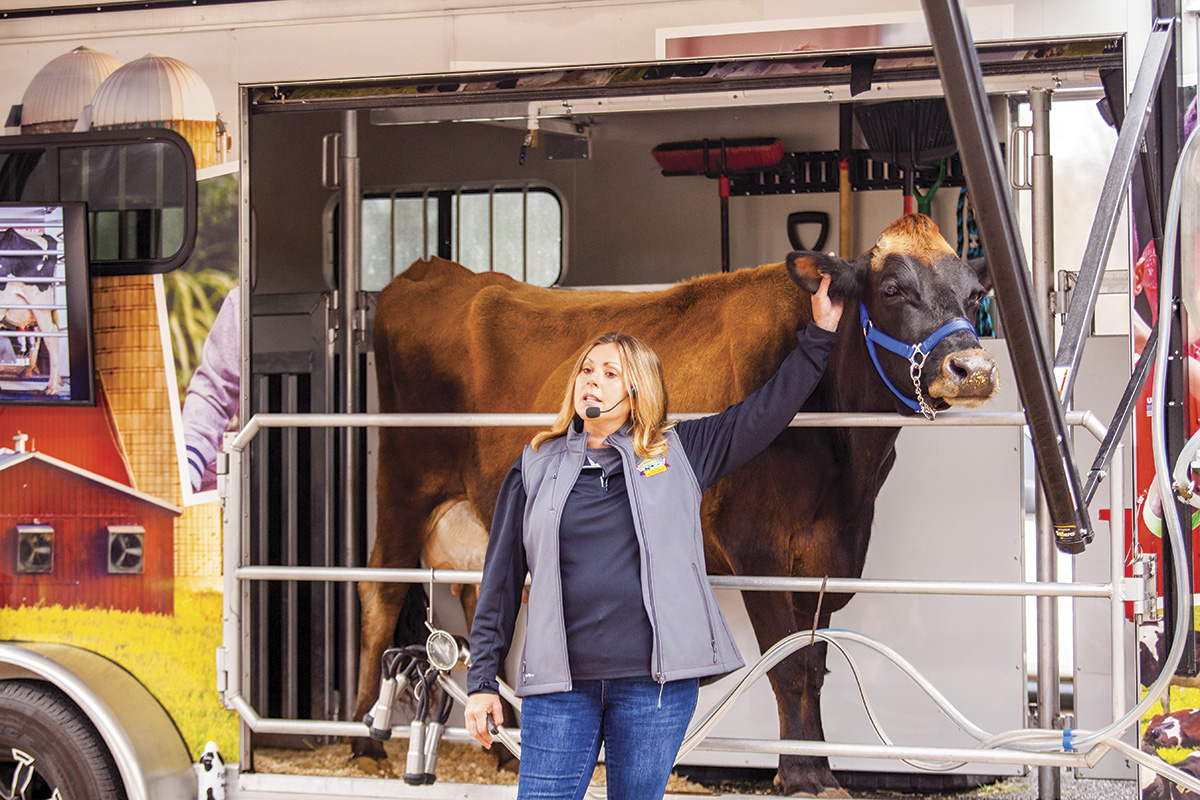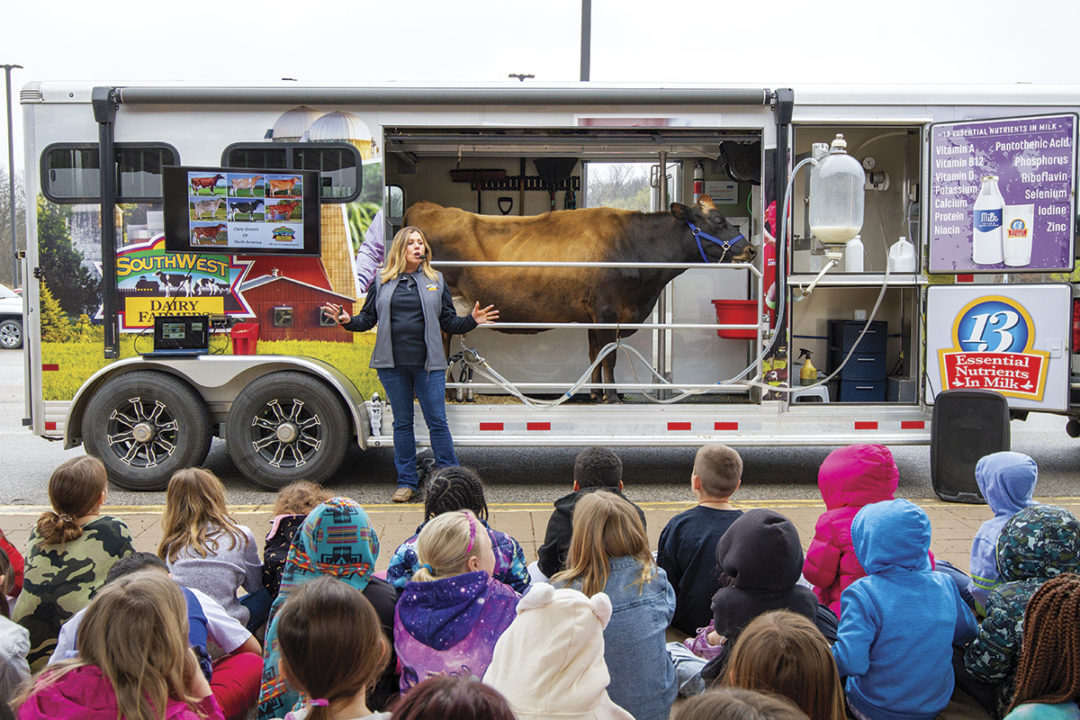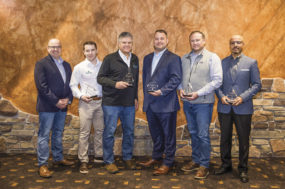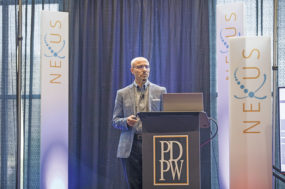The creation of a traveling mobile dairy classroom – which includes a milking demonstration – educates kids and adults across the nation. It is funded by the Southwest and Southland Dairy Farmers across 10 states. The unique cattle trailer goes beyond the ordinary, equipped with features such as modern milking equipment, sprinklers, ample shavings and fans to ensure cow comfort during appearances throughout the year. Its purpose is to showcase the milking process all the way to refining final dairy products.
The checkoff organization, which is funded by a portion of 15 cents per hundredweight of the milk dairy farmers sell, has been educating youth for over 35 years with the mobile classroom. The program has evolved from its early days with one mobile unit in Texas and now boasts 12 educational trailers that travel primarily in Illinois, Kansas, Kentucky, Missouri, North Carolina, Oklahoma, North Carolina, Texas and Virginia. Most recently, the organization partnered with the St. Louis District Dairy Council to provide a full-time mobile unit in eastern Missouri and Illinois.
When dairyman Ralph Keel was asked to lend one of his cows for the launch of the educational program in Oklahoma, he was skeptical. However, as he witnessed a presentation by the mobile unit, he quickly began to love it.
“When I went and saw the kids’ eyes [light up] like that, I felt so much right there and fell in love with the programming,” Keel says.
A few years later in 1992, when the organization was searching for a full-time instructor for an Oklahoma-based trailer, Keel was a natural fit for the position. He now holds a supervisory role in the program.
Keel projects 2023 will surpass the number of people reached in 2022, with an expected direct impact of over 720,000 students and adults. Instructors will visit over 1,000 schools during the year, as well as participate in various events, such as festivals and county and state fairs. Suzie Reece, a mobile dairy classroom instructor based in Oklahoma, enjoys the opportunity to connect with students from various backgrounds.
“Every day is different. Getting to see kids where they live and in their communities to bring them more knowledge about the industry and how important it is for us to support our farmers and dairy farmers is rewarding,” Reece says.
Reece starts her day by traveling anywhere from 15 minutes to three hours away with her educational companion, Snickers, a 9-year-old Jersey.
“She’s a very famous cow. Everybody knows her and asks if it’s Snickers when I show up,” Reece says. Recently, when purchasing feed, she heard, “Oh, I know you. You’re the lady with Snickers. I see you at the fair every year.”
Snickers has been with Reece since she started six years ago. Reece says in almost every visit Snickers chews her cud on cue and is somewhat potty trained.
“She knows it’s her time to shine,” Reece says.
Reece schedules Snickers' presentations in the morning through early afternoon, and she gets to be a typical cow the rest of the day. Days vary anywhere between three to six presentations.
“A lot of students will say this is the first time they’ve seen a cow and been this close,” Reece says, even in rural areas. “When kids come in, they will stumble over each other in line looking at the cow and not pay attention to where they’re walking. It's really kind of cute with the little ones, as they cannot take their eyes off the cow."
In less than an hour, Reece covers many topics related to the dairy industry. In her presentation, she emphasizes the importance of consuming milk for its 13 essential nutrients, highlighting the need for three servings of dairy daily to maintain a healthy lifestyle. The program incorporates visuals, including a television monitor, with the milking demonstration.

Reece points to the RFID tag on Snickers, showing how technology continues to evolve in the dairy industry. Courtesy photo.
“I talk about how dairy farmers work and that the milk and dairy products don’t just show up at the grocery store,” Reece says. “Dairy farming is 24/7, and during the program, I say that dairy farmers are milking cows every single day of the year. Morning and night whether it’s hot, cold, raining, snowing, birthdays and Christmas. They’re still milking cows.”
“It’s important to let them know what the dairy farmers go through every day to get wholesome dairy products to the consumer,” adds Keel, who draws from his personal experience of growing up on a farm.
As part of the program for over 32 years, Keel has witnessed changes as the industry has evolved with modern technologies and information. While the presentations continue to focus on dairy cows, the modern milking process, dairy farmers' efforts to produce milk and their strong environmental and animal care practices, the program now emphasizes the nutritional value of milk and dairy products in a healthy diet and encourages milk consumption among the public. The mobile dairy classroom also relates to math, science, health/nutrition, sanitation and food safety.
The impact of the program on millions of students over the years has been overwhelmingly positive. Successful visits are marked by smiles and engaging questions.
“How I tell [if the presentation was successful] is when people leave my classroom with a smile on their face,” Keel says. “The best part is when I walk into the cafeteria, and the kids are actually holding their milk and they’re showing me that they’re drinking it.”
Many adults also attend the presentations. At fairs, Keel notes that a significant portion of the audience consists of adults, rather than children. However, he emphasizes the influence that children have on their parents when a presentation resonates with them.
“If you can get the kids on board by informing them about the nutritional value of milk and dairy products, their parents will follow this lead and provide dairy products in their diets,” Keel says. “People are just amazed.”
Reece, who also grew up on a dairy farm and taught second-grade students in the public school system for over 20 years, points out that both children and adults ask various questions during the presentations. One common question she receives is why the demonstration cow appears skinny. Reece clarifies the difference between dairy and beef cows, explaining how dairy cows utilize food and nutrition differently to produce milk instead of gaining extra weight, as they are genetically bred for milk production.
“Being raised on a farm, you don’t realize how many people don’t have contact with cows,” Reece says.
Now, she feels it’s the perfect role for her to bridge the gap between dairy and kids.
“Having my love for teaching, my interest in the dairy industry, being with these cows, and being able to share my knowledge with kids all over was the perfect situation for me,” Reece says.
The program’s popularity is evident in the fact that it is often fully booked months or even a year in advance. There is no charge for the program, courtesy of the Southwest and Southland Dairy Farmers, who support dairy producers through the dairy checkoff program. It serves as a crucial tool to communicate the importance of including dairy in one’s diet for maintaining good health.
Ultimately, Reece and Keel and the other 11 mobile dairy classroom instructors find the impact of this 35-year-old program rewarding, with priceless reactions from kids and adults across the region.
“They’re just in amazement,” Keel says. “They don’t realize all this takes place on a dairy farm and what these farmers and cows do to provide wholesome dairy products for the public. So that’s what it’s all about to me. We educate children and adults with the important message about dairy and agriculture and its vital role in providing America’s food.”







